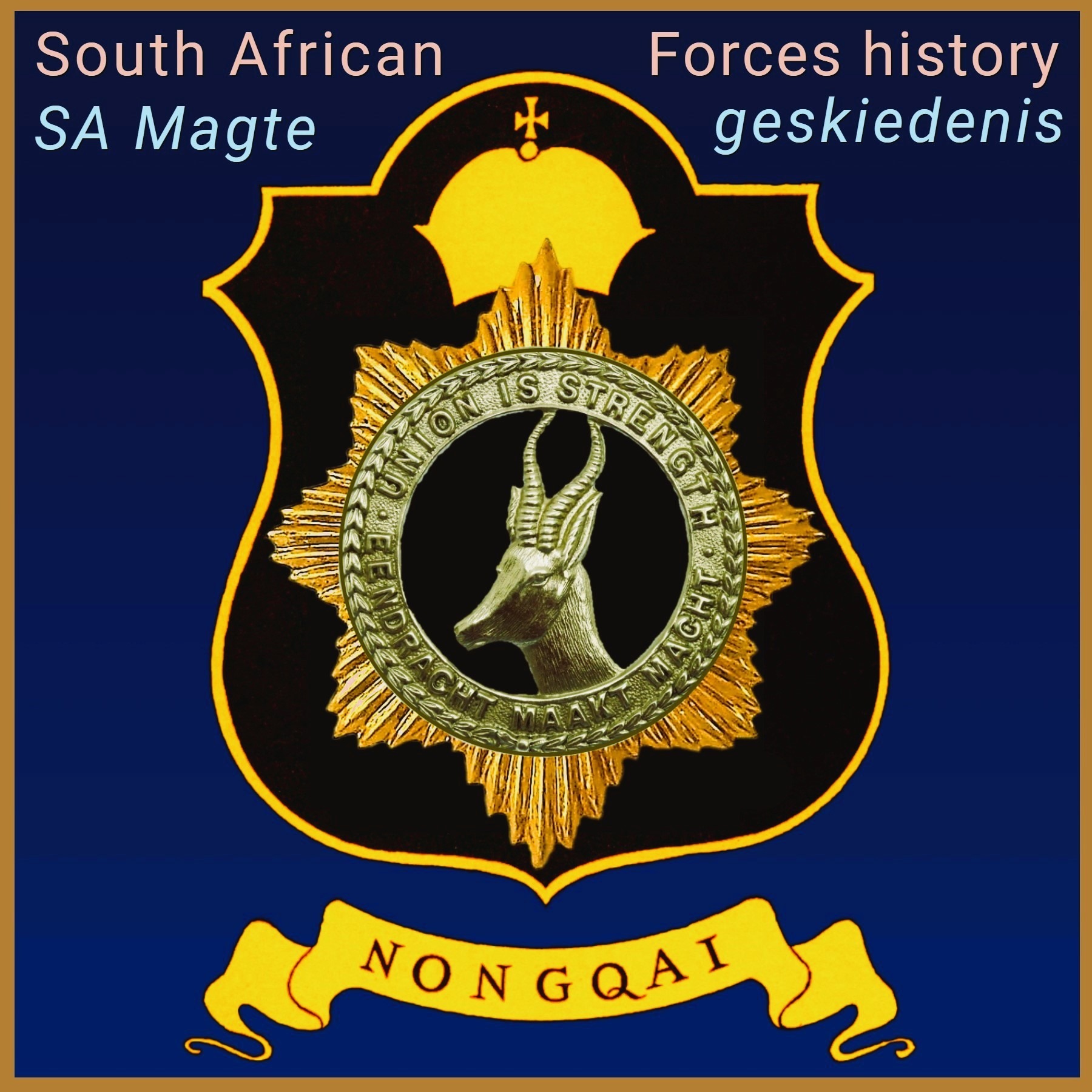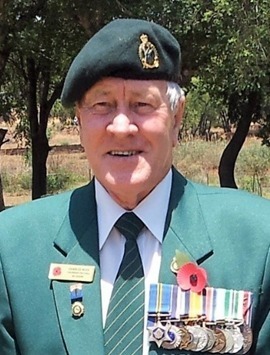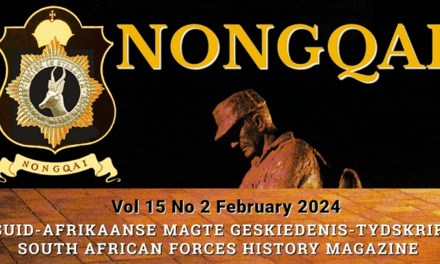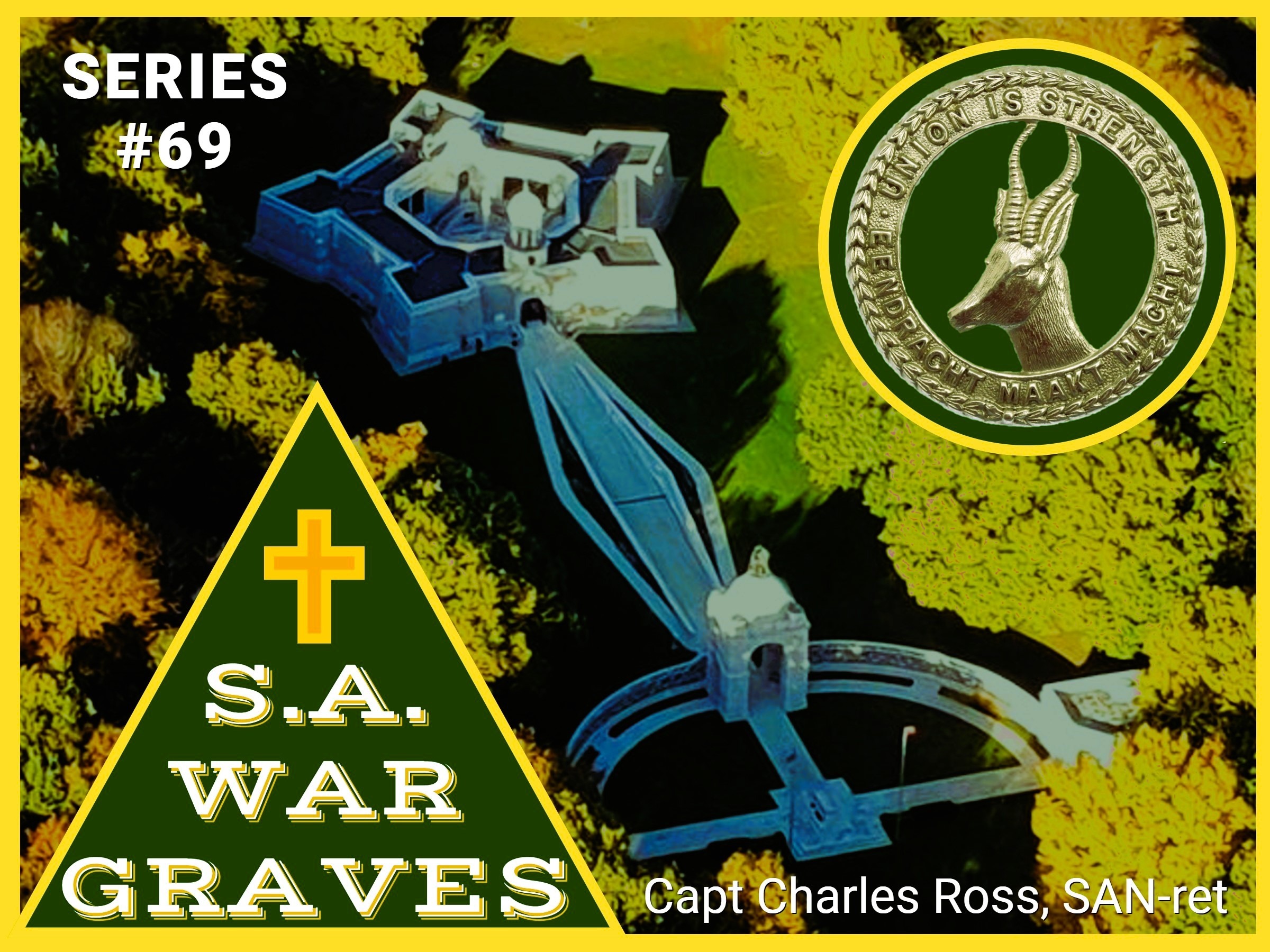
WE WILL REMEMBER

SOUTH AFRICAN COMMONWEALTH WAR CASUALTIES BURIED ACROSS THE WORLD: PART SIXTY – NINE
Captain (SAN) Charles Ross (SA Navy Retired)
Abstract
South Africans took part in almost every war theatre during the First and Second World Wars. According to the Commonwealth War Graves Commission Casualty Data Base 7 290 (includes 607 unknown). First World War casualties and 9 986 (includes 84 unknown). Second World War casualties are buried in 1 207 cemeteries while 2 959 First World War and 2 005 Second World War casualties are commemorated on 48 memorials. This does not include the more than 2 700 South Africans who until recently were not commemorated by the Commonwealth War Graves Commission. A new memorial to commemorate these South Africans is being constructed in the Gardens in Cape Town and should be completed during 2023.
South Africans took part in almost every war theatre during the First and Second World Wars. According to the Commonwealth War Graves Commission Casualty Data Base 7 290 (includes 607 unknown) First World War casualties and 9 986 (includes 84 unknown) Second World War casualties are buried in 1 207 cemeteries while 2 959 First World War and 2 005 Second World War casualties are commemorated on 48 memorials. This does not include the more than 2 700 South Africans who until recently were not commemorated by the Commonwealth War Graves Commission. A new memorial to commemorate these South Africans is being constructed in the Gardens in Cape Town and should be completed during 2023.
- Caserta War Cemetery – Italy
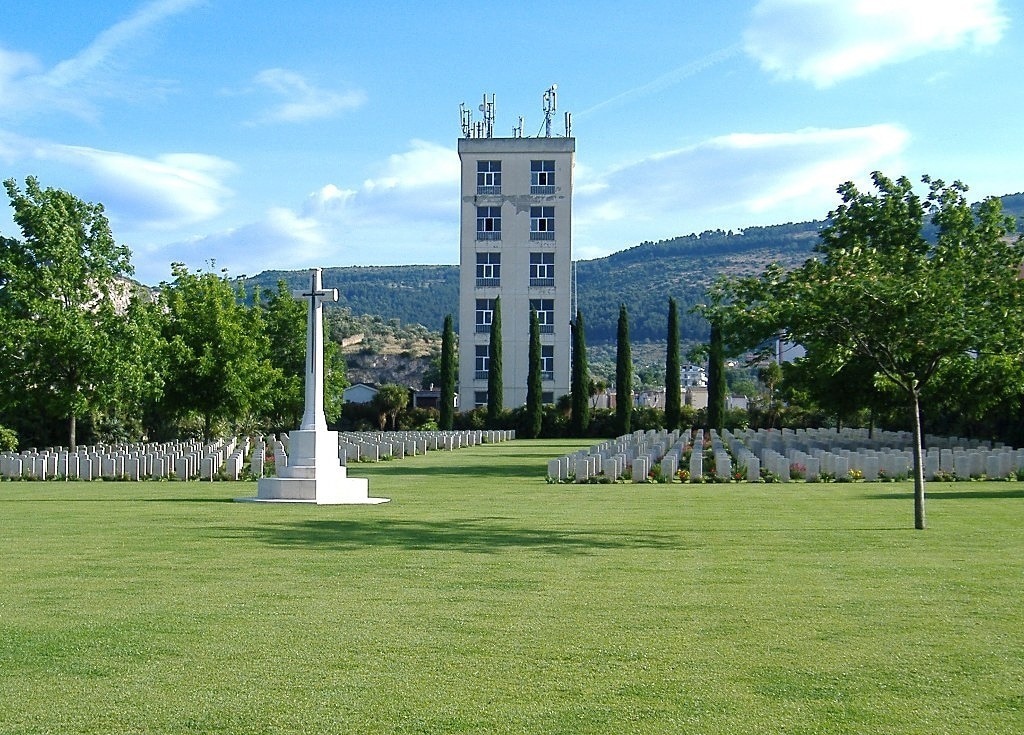 On 3 September 1943 the Allies invaded the Italian mainland, the invasion coinciding with an armistice made with the Italians who then re-entered the war on the Allied side. Allied objectives were to draw German troops from the Russian front and more particularly from France, where an offensive was planned for the following year.
On 3 September 1943 the Allies invaded the Italian mainland, the invasion coinciding with an armistice made with the Italians who then re-entered the war on the Allied side. Allied objectives were to draw German troops from the Russian front and more particularly from France, where an offensive was planned for the following year.
The Royal Palace at Caserta served as headquarters for the Allied armies in Italy for the greater part of the duration of the Italian campaign and the 2nd General Hospital was at Caserta from December 1943 until September 1945. Some of those buried here died in the hospital, others as prisoners of war (there was a POW Hospital at Caserta) before the Allied invasion. There are also a few burials from the October 1943 fighting on the River Volturno, which lies not far away to the north.
Caserta War Cemetery contains 768 Commonwealth burials of the Second World War.
The cemetery was designed by Louis de Soissons.
There are 54 South African casualties from the Second World War buried in the cemetery.
Fifteen Ravine British Cemetery – France
“Fifteen Ravine” was the name given by the Army to the shallow ravine, once bordered by fifteen trees, which ran at right angles to the railway about 800 metres south of the village of Villers-Plouich, but the cemetery is in fact in “Farm Ravine,” on the east side of the railway line, nearer to the village.
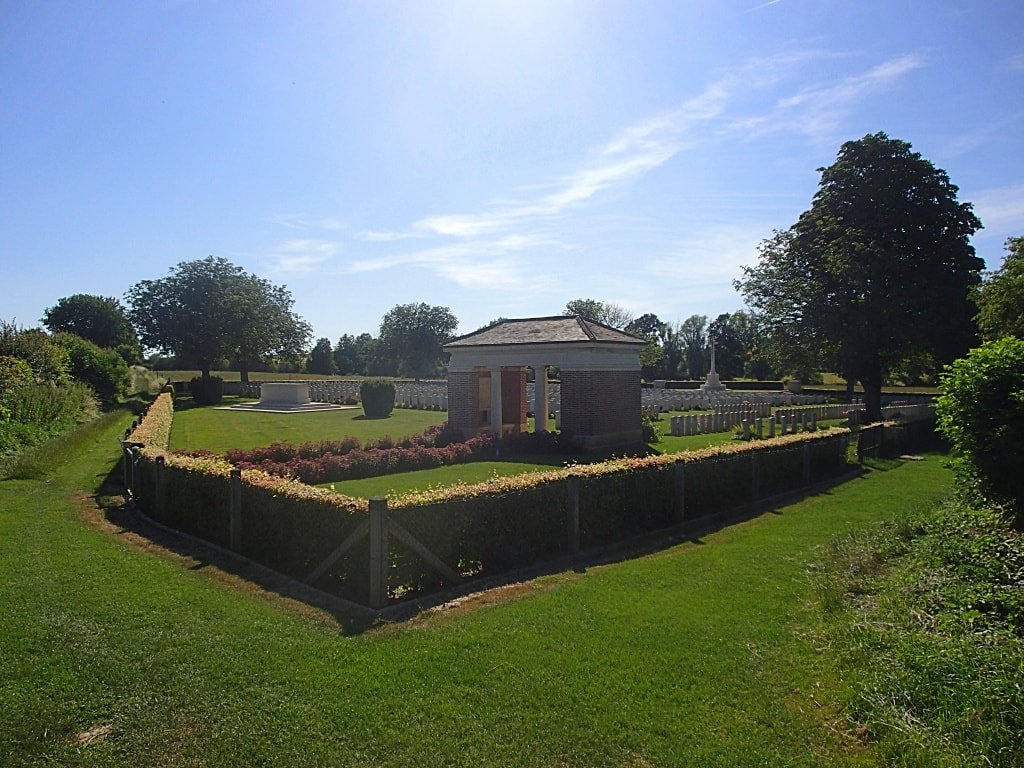 The cemetery, sometimes called Farm Ravine Cemetery, was begun by the 17th Welsh Regiment in April 1917, a few days after the capture of the ravine by the 12th South Wales Borderers. It continued in use during the Battle of Cambrai (November 1917) and until March 1918, when the ravine formed the boundary between the Third and Fifth Armies. On 22 March, the second day of the great German offensive, the ground passed into their hands after severe fighting, and it was not regained until the end of the following September.
The cemetery, sometimes called Farm Ravine Cemetery, was begun by the 17th Welsh Regiment in April 1917, a few days after the capture of the ravine by the 12th South Wales Borderers. It continued in use during the Battle of Cambrai (November 1917) and until March 1918, when the ravine formed the boundary between the Third and Fifth Armies. On 22 March, the second day of the great German offensive, the ground passed into their hands after severe fighting, and it was not regained until the end of the following September.
In March 1918, the cemetery contained 107 graves (now Plot I), but it was greatly enlarged after the Armistice when graves were brought in from the battlefields south-west of Cambrai and other cemeteries, including: Argyle Road Cemetery, Beaucamp, Bourlon German Cemetery and Marcoing Sunken Road Cemetery.
Fifteen Ravine British Cemetery now contains 1,267 burials and commemorations of the First World War, of which 739 of the burials are unidentified. There are special memorials to 44 casualties known or believed to be buried among them. Other special memorials commemorate ten men of the Argyll and Sutherland Highlanders, buried in Argyle Road Cemetery, Beaucamp, whose graves were destroyed by shell fire.
The cemetery was designed by Sir Herbert Baker.
There are ten unknown South African casualties from the First World War buried in the cemetery.
Sucrerie Military Cemetery – France
The cemetery was begun by French troops in the early summer of 1915, and extended to the West by British units from July in that year until, with intervals, December 1918. It was called at first the 10th Brigade Cemetery. Until the German retreat in March 1917, it was never more than 1.6 kilometres from the front line; and from the end of March 1918 (when the New Zealand 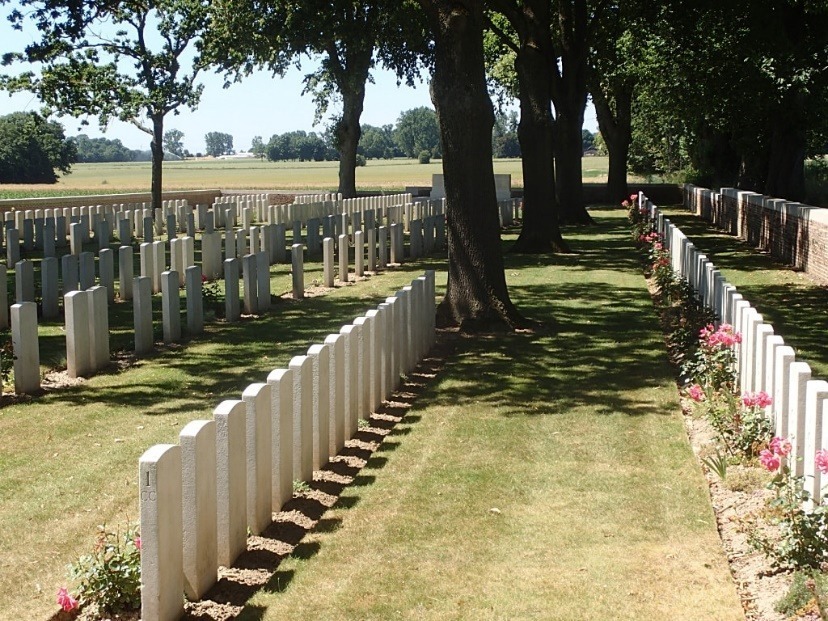 Division was engaged in fighting at the Sucrerie) to the following August, it was under fire. The 285 French and twelve German graves were removed to other cemeteries after the Armistice, and in consequence there are gaps in the lettering of the Rows.
Division was engaged in fighting at the Sucrerie) to the following August, it was under fire. The 285 French and twelve German graves were removed to other cemeteries after the Armistice, and in consequence there are gaps in the lettering of the Rows.
There are now 1111, 1914-18 war casualties commemorated in this site. Of these 226 casualties are unidentified.
The cemetery covers an area is 6,322 square metres and it is enclosed by a low brick wall.
There are 32 (eight known and 24 unknown) South African casualties from the First World War buried in the cemetery.
Roye New British Cemetery – France
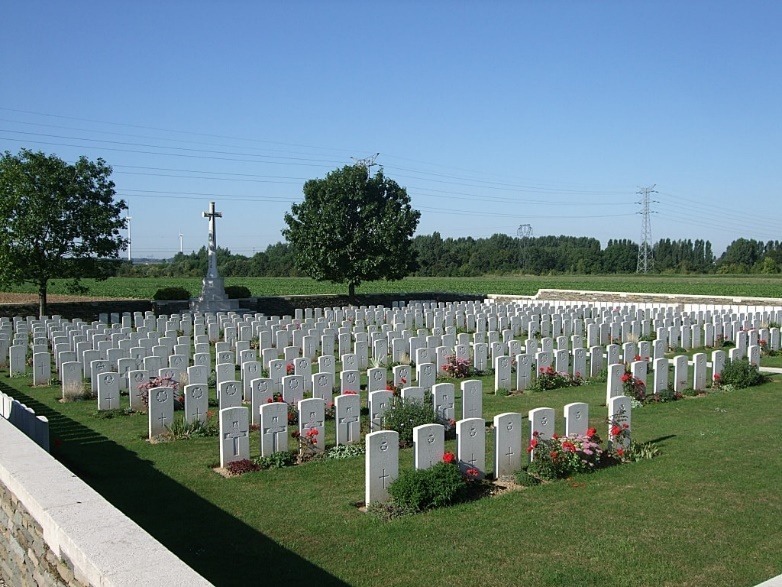
Roye was in German hands from 30 August 1914 until the French retook it on 17 March 1917. The town was recaptured by the Germans on 26 March 1918 but was evacuated by them on 26 August. The French First Army entered the town the following day.
Roye Old British Cemetery was 1.6 kilometres south of the town. It was made in March 1918, by the 53rd Casualty Clearing Station but there was little time to mark the graves before the town was captured by the Germans, who extended this cemetery for the burial of their own dead. In 1920 the Commonwealth graves were removed to Roye New British Cemetery.
Roye New British Cemetery was made after the Armistice when graves were brought in from the battlefields and from other burial grounds in the area.
The cemetery contains 565 Commonwealth burials and commemorations of the First World War. 153 of the burials are unidentified but there are special memorials are erected to 13 casualties known or believed to be buried among them. Other special memorials record the names of 117 casualties buried in Marchelepot British Cemetery and in three German cemeteries, whose graves could not be found.
The cemetery also contains the graves of 43 Second World War airmen.
There are 14 South African casualties from the First World War buried in the cemetery.
Ste. Marie Cemetery Le Harve – France
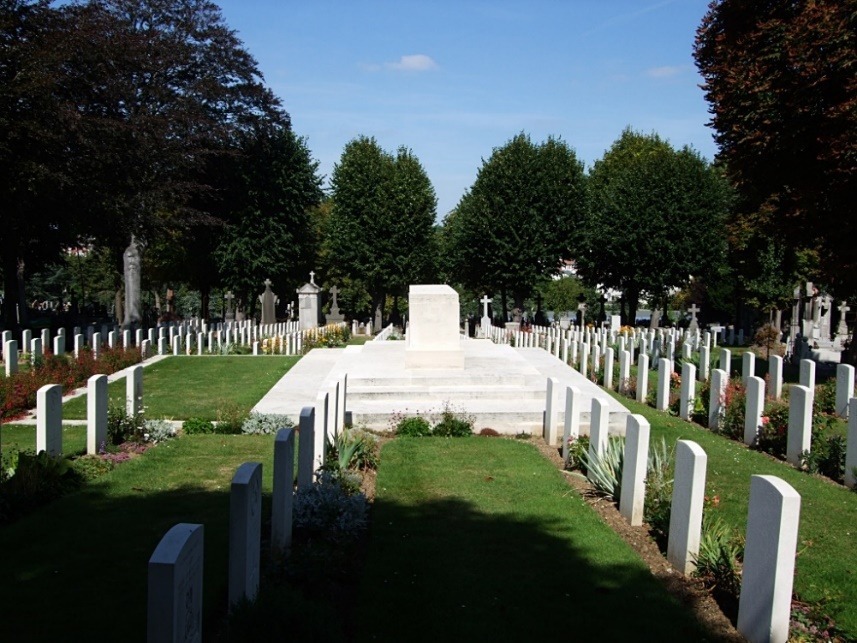 During the First World War, Le Havre was one of the ports at which the British Expeditionary Force disembarked in August 1914. Except for a short interval during the German advance in 1914, it remained No.1 Base throughout the war and by the end of May 1917, it contained three general and two stationary hospitals, and four convalescent depots.
During the First World War, Le Havre was one of the ports at which the British Expeditionary Force disembarked in August 1914. Except for a short interval during the German advance in 1914, it remained No.1 Base throughout the war and by the end of May 1917, it contained three general and two stationary hospitals, and four convalescent depots.
The first Commonwealth burials took place in Division 14 of Ste Marie Cemetery in mid August 1914. Burials in Divisions 19, 3, 62 and 64 followed successively.
A memorial in Plot 62 marks the graves of 24 casualties from the hospital ship ‘Salta’ and her patrol boat, sunk by a mine on 10 April 1917. The memorial also commemorates by name the soldiers, nurses and merchant seamen lost from the ‘Salta’ whose bodies were not recovered, and those lost in the sinking of the hospital ship ‘Galeka’ (mined on 28 October 1916) and the transport ship ‘Normandy’ (torpedoed on 25 January 1918), whose graves are not known.
There are now 1,690 Commonwealth burials of the First World War in this cemetery, 8 of which are unidentified.
Click on links below for more about Commonwealth War Graves.
